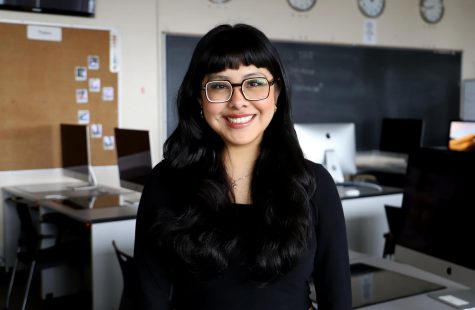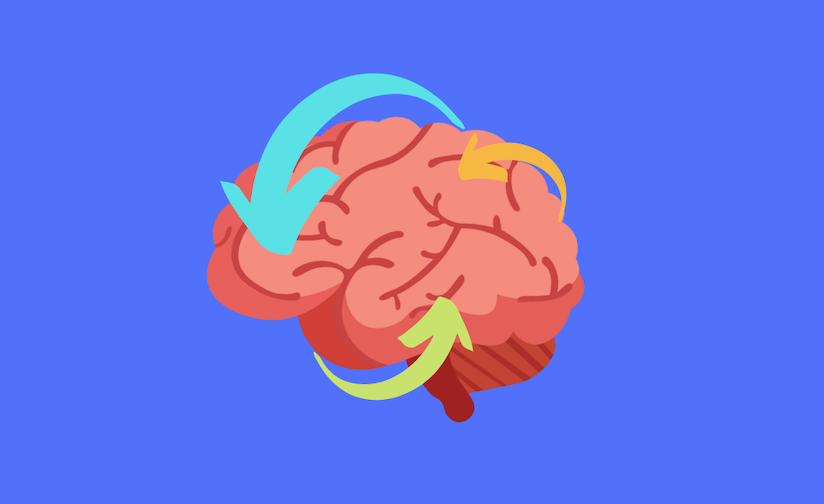What college life is like for those with ADHD
ADHD abbreviates attention-deficit/hyperactivity disorder.
For Cal State LA student Christine Figueroa, attention deficit hyperactivity disorder, or ADHD, feels like they’re sitting in a glass box, thirsty, with a glass of water just outside the enclosure, “and I just can’t grab it.”
Nearly 10% of children between the ages of 3 and 17 have been diagnosed with ADHD, according to the Center for Disease Control
Figueroa, who uses they/them pronouns, is a rehabilitation services major, and was diagnosed with ADHD and Autism Spectrum Disorder in 2021.
“It really validated my whole life experience, because I was just always told I was lazy or unmotivated or [I’m] very bright, but just can’t do the steps to get things done,” they said
Brigitte Matthies, professor emeritus in psychology at Cal State LA, said ADHD can start with hyperactivity in childhood, but through adolescence and adulthood, the lack of attentiveness is what becomes more prominent.
A person with ADHD “has difficulty paying attention, doing tasks and taking them right through to the end,” she said. “That’s when, academically, the student starts to really struggle.”
Problems at school can be followed by problems at work. For example, “difficulty remembering deadlines at work, difficulty remembering meetings,” she said.
“About three in four U.S. children with current ADHD receive treatment,” according to the CDC.
CDC data also finds that medication is a common form of treatment for ADHD, with 62% of children using it.
Figueroa uses Vyvanse, an ADHD medication.
“It’s such a game changer,” Figueroa said. “Before I started taking stimulants like Vyvanse, I really had a hard time completing any assignment for more than 20 minutes at a time. I would constantly be diverting my attention to something else.”
With medication, “it’s a lot easier to sort of organize myself in a way so I can switch into tasks more efficiently,” they said.
The same goes for Cal State LA student, Emily Allen, who was diagnosed with ADHD in 2008, when she was 12 years old.
Recently, Allen hasn’t had access to her ADHD medication because of issues with her insurance provider.
“I haven’t had my Vyvanse for a while,” Allen said. “When I don’t take it, as I haven’t been for months, I can’t focus. I’m procrastinating, I can’t get anything done.”
With her medication, those problems that affect her at work and school are easier to manage.
“I don’t have so many thoughts running around my head,” she said. “I’m not as anxious. I’m able to focus on what people are saying.”
Drugs used to treat ADHD are stimulants that cause what Matthies calls a “paradoxical reaction.”
“You would think, ‘well, why are you giving a stimulant to somebody who’s already out of control?’ It shouldn’t make sense,” Matthies said. “They’re out of control because they’re trying to stimulate themselves, so if you give them a stimulant, they don’t have to do that.”
With ADHD, there is reduced activity, particularly in the frontal part of the brain, according to Matthies.
“The medications increase the amount of dopamine, which is a neuro-transmitter in your brain,” which helps with stimulation.
Allen tutors students in AP history online. She said that without her medication, she hasn’t been able to take as many clients as usual.
“I’m very forgetful and it’s very hard to focus,” she said. “I can’t work as much.”
Matthies said memory problems and ADHD are closely linked.
“You can’t remember unless you first pay attention to something,” she said. “Our memories are better if we pay attention to something and we keep paying attention to it.”
There are some professionals who remain skeptical of ADHD’s existence.
Dr. Henry Schlinger, a psychology professor at Cal State LA, is one of them. Schlinger doesn’t believe in learning disabilities like ADHD.
“There’s scant neurobiological evidence for any of them,” Schlinger said. “You don’t diagnose ADHD on the basis of brain scans, so calling them neurobehavioral disorders is not very accurate because the evidence that there is something neurologically different about a kid diagnosed with ADHD than any other kid is just not there.”
Schlinger said that some of the trouble seen by those diagnosed with ADHD could possibly be due to parenting, teaching and classroom structure.
“If you have a stimulating, engaging, highly-interactive and rewarding environment, you will see fewer of those kinds of behaviors,” he said. “There may be a few kids who, no matter what, will behave in those ways, but I think it’s a lot fewer than we currently diagnose.”
Schlinger said he doesn’t assume something is wrong with students with attention issues.
“My assumption is they have not been taught correctly or they have not been exposed to the best teaching practices or the best classroom environments,” he said. “If we can simply change that and give them better teaching, we can change some of their behaviors.”
Figueroa said that things like standardized testing in schools and the methods for school funding could contribute to particular learning environments.
There is “a lot of pressure on instructors and teachers in general because they are not allowed to individualize their curriculums to what, maybe, the local environment can offer to the students,” Figueroa said. “So, inherently the material is not as interesting to the students.”
“I think that this issue with public education is more of a structural issue than an instructional issue.”
Along with medication, other behavioral techniques for handling ADHD are out there.
For Figueroa, one way to help is with the use of fidget items. “Grounding myself in a physical environment more kind of keeps my brain from wandering as much,” they said.
They also listed visual timers, noise-canceling headphones and well-prepared workspaces as ways to help stay on track.
Keeping agendas, taking walks and setting reminders help Allen stay organized.
For college students with ADHD, “these are all survival skills,” said Dr. Christina Kimm, a professor in the department of special education and counseling.
Figueroa is in the process of drafting up a constitution for a club on campus called “The Neurodivergent Collective” of Cal State LA, which would aim to create a space for students who identify as neurodivergent, or students that are allies to neurodivergent people to engage in advocacy. They would also like the club to educate the wider community about what neurodiversity is and how it can impact people with different identities.
“Instead of looking at it as deficits or pathologizing it into symptoms, we look at it as just neurodiversity,” Figueroa said. “It’s sort of accepting those differences rather than making it out to be a bad thing.”
ADHD doesn’t always manifest the same way in everyone. Home life, parenting and teaching methods all determine experience with the disorder.
Allen said people are sometimes surprised that she has ADHD because she’s not always hyperactive.
“You can have ADHD and not be jumping up and down,” Allen said. “We all have our own story.”

Erik Adams is a third-year journalism major and multimedia reporter at The University Times. He enjoys covering culture, history and social issues. He...

Fatima Rosales is majoring in Graphic Design and Visual Communications. She works for the University Times as Production Manager, designing the newspaper,...












Alan Otter • Sep 20, 2022 at 12:36 pm
Yep skeptics have a problem with ADHD. It’s funny how people who have it can relate although we all have differences. You can’t judge anything unless you are in their heads. Just like a man can’t tell you what it’s like to be a woman and will never understand it unless the have it.